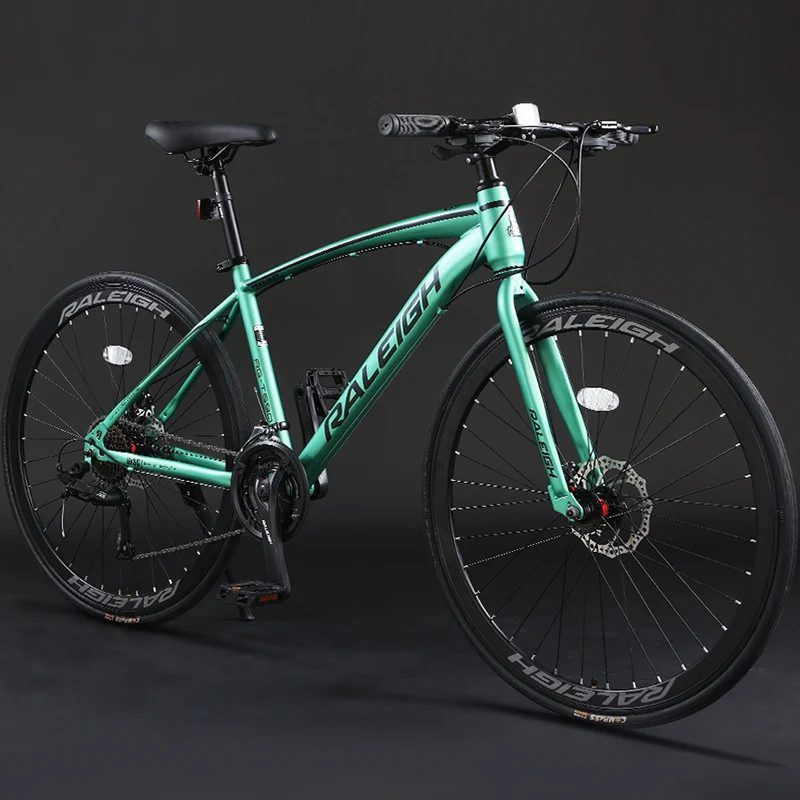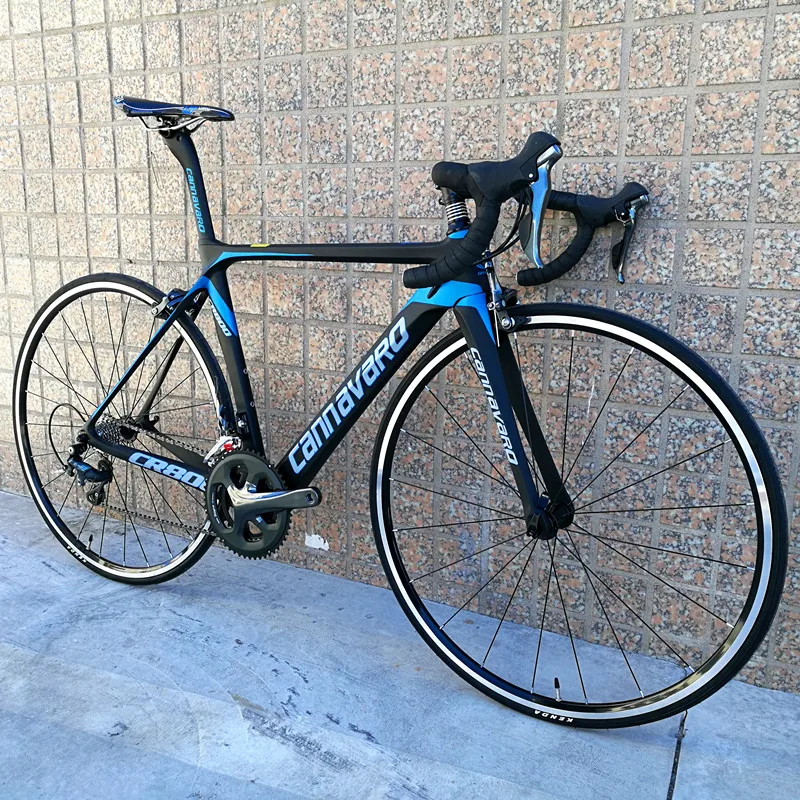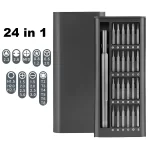The quest for speed defines the world of road cycling, and the fastest road bikes represent the pinnacle of engineering, aerodynamics, and lightweight construction. These high-performance machines are built for riders who demand maximum efficiency, whether racing on open roads or chasing personal bests on weekend rides.
Moreover, manufacturers invest heavily in wind tunnel testing, carbon fiber innovation, and component integration to shave off seconds. Every tube shape, cable routing, and wheel choice is optimized to reduce drag and increase power transfer. As a result, today’s fastest road bikes offer unmatched velocity and responsiveness.
In addition, these bikes appeal to competitive cyclists, triathletes, and enthusiasts seeking an edge. They combine aggressive geometry with stiffness for explosive acceleration. At the same time, modern designs improve comfort over long distances.
Also, advancements in materials like high-modulus carbon fiber allow frames to be both ultra-light and incredibly strong. This balance supports sprinting force without sacrificing durability. Aerodynamic profiles further enhance speed by cutting through air resistance.
Furthermore, electronic drivetrains from brands like Shimano Di2 and SRAM AXS deliver flawless shifting. Precision matters at high speeds. Riders maintain momentum without hesitation between gears.
Wheels play a crucial role too. Deep-section rims improve airflow and stability. Tubeless tires reduce rolling resistance and lower the risk of flats.
Ultimately, the fastest road bikes merge science and passion. They push the limits of what’s possible on two wheels. And for anyone chasing peak performance, they offer a thrilling ride into the future of cycling.
 Why Speed Matters in Modern Road Cycling
Why Speed Matters in Modern Road Cycling
Speed is more than just a number on a display. It reflects efficiency, training, and equipment synergy. For racers, every second counts in breakaways or sprints. Therefore, owning one of the fastest road bikes can make a real difference.
Also, speed enhances the riding experience. Gliding smoothly down hills or powering past competitors builds confidence. Momentum feels effortless when the bike responds instantly.
Aerodynamics plays a major role. Wind resistance increases exponentially with speed. At 25 mph, over 90% of effort fights air drag. Thus, streamlined frames reduce fatigue and boost output.
Lightweight frames help too. Less mass means quicker acceleration. Climbing becomes easier. Riders spend less energy getting up to pace.
Stiffness improves power transfer. When you pedal hard, the frame should not flex excessively. Efficient energy delivery keeps you moving forward faster.
Moreover, rider position affects speed. Aggressive drops and narrow handlebars minimize frontal area. This reduces turbulence and increases control.
Technology supports human effort. Integrated cockpits hide cables. Hidden brakes and seatposts cut drag. Even small details contribute.
Training and fitness remain essential. No bike replaces effort. However, the fastest road bikes amplify your input.
Thus, speed isn’t just about winning. It’s about feeling connected, fast, and capable. And modern bikes deliver that sensation like never before.
Top Brands Leading the Race for the Fastest Road Bikes
Specialized dominates with its S-Works Venge platform. Engineered in wind tunnels, it combines low weight with top-tier aerodynamics. Pro Tour riders trust it in sprints and time trials.
Trek’s Emonda SLR and Madone series compete across categories. The Madone focuses on speed with IsoSpeed decouplers. It balances comfort and aero gains.
Cannondale’s SystemSix stands out for pure aero performance. Its Ai offset drivetrain improves chainline. The design cuts drag while maintaining stiffness.
Pinarello’s Dogma F series appears frequently in Grand Tours. Used by Team Ineos, it blends Italian craftsmanship with race-winning results. Sharp lines and advanced layup techniques define its edge.
Giant’s Propel Advanced SL features truncated airfoils. These shapes manage airflow better at varying angles. The result is consistent speed in crosswinds.
Cervélo’s S5 model is another wind tunnel favorite. Its Smart Aero Technology adjusts tube shapes based on function. The cockpit integrates seamlessly.
BMC’s Teammachine SLR01 emphasizes stiffness and responsiveness. While slightly heavier, it excels in punchy accelerations. Swiss precision drives its reputation.
Colnago offers hand-built excellence. Their V4Rs model delivers speed with classic style. Carbon layup techniques ensure high performance.
Factor Bikes focus on data-driven design. The Ostro VAM uses computational fluid dynamics. It suits climbers who still need aero benefits.
Each brand brings unique strengths. Whether prioritizing weight, stiffness, or aerodynamics, all aim to build the fastest road bikes.
 Key Features That Make a Road Bike Fast
Key Features That Make a Road Bike Fast
Aerodynamic frame design is the most critical factor. Tubes shaped like airfoils reduce drag. Kamm-tail profiles smooth airflow behind the frame.
Integrated components improve airflow. Internal cable routing hides wires. Handlebars and stems blend into one unit. Fewer protrusions mean less resistance.
Deep-section wheels enhance speed. Rims between 50–80mm reduce turbulence. They maintain momentum better than shallow ones.
Tubeless tire setups lower rolling resistance. Sealant prevents punctures. Wider tires (25–28mm) actually roll faster on real roads.
Lightweight construction helps climbing and sprinting. Sub-7kg builds are common. High-modulus carbon keeps strength without adding mass.
Stiff bottom brackets transfer power efficiently. Carbon dropouts and oversized tubes resist flex. More energy goes to the road.
Electronic shifting ensures perfect timing. Di2 and eTap systems shift under load. No missed gears during attacks.
Narrow handlebars reduce frontal area. Many models use 40–42cm widths. Drops stay low for an aggressive posture.
Hidden seat clamps and seatposts improve airflow. Some bikes use proprietary posts to eliminate seams.
All these elements work together. One weak link can slow the whole system. The fastest road bikes optimize every part.
How Frame Geometry Affects Speed and Handling
Geometry determines how a bike feels at high speeds. Race-oriented models use steep head angles. This increases steering responsiveness.
Short wheelbases make bikes more agile. Quick turns benefit from tighter dimensions. However, stability may suffer at very high speeds.
Stack and reach influence rider position. Low stack puts you in an aero tuck. Long reach extends your torso over the bars.
Endurance bikes have taller stacks. They raise the front end for comfort. But this increases wind resistance.
Chainstay length affects acceleration. Short stays improve rear-end stiffness. Power transfers faster from pedals to wheels.
Bottom bracket drop changes cornering clearance. Lower BBs improve stability in bends. But they risk pedal strikes on climbs.
Trail measurement impacts steering feel. Higher trail makes bikes track straighter. Lower trail allows quicker flicks.
Manufacturers adjust geometry based on size. Larger frames often have slacker angles. This maintains balance across the range.
Fit matters more than specs. A poorly fitted fast bike slows you down. Professional bike fits align geometry with your body.
Therefore, speed isn’t just about the frame. It’s about how well it matches the rider.
 Best Wheels and Tires for Maximum Velocity
Best Wheels and Tires for Maximum Velocity
Wheels significantly impact speed. Deep carbon rims reduce drag. 60mm to 80mm depths suit flat to rolling terrain.
For hilly routes, shallower rims (30–50mm) save weight. They accelerate faster uphill. Balance aero gains with climbing needs.
Tubeless tires dominate now. They run at lower pressures without pinch flats. Rolling resistance drops by measurable amounts.
Tire width has evolved. 25mm and 28mm tires roll faster than 23mm on real roads. They absorb bumps without slowing down.
Latex inner tubes reduce friction. Tubular setups still appear in pro races. However, tubeless clinchers offer similar speed with easier maintenance.
Wheel hubs affect efficiency. Ceramic bearings spin smoother. Regular cleaning keeps them fast.
Spoke count influences aerodynamics. Fewer spokes (16–20) cut wind drag. Bladed spokes manage airflow better.
Brake type also plays a role. Disc brakes allow wider tires and better modulation. Rim brakes save slight weight but limit options.
Pair wheels with your frame. Some brands tune rims to match fork and stays. Compatibility maximizes aero benefits.
Always balance speed with conditions. Crosswinds challenge deep rims. Choose wisely based on typical routes.
Components That Boost Performance on Fast Road Bikes
Groupsets define shifting quality. Shimano Dura-Ace Di2 offers lightning-fast shifts. Hydraulic disc brakes add control in descents.
SRAM Red eTap AXS uses wireless tech. No cables mean cleaner integration. Lighter weight and crisp shifting attract pros.
Campagnolo Super Record EPS combines elegance with speed. Italian design appeals to purists. Smooth actuation suits long efforts.
Power meters help track effort. Built-in crank or hub meters guide pacing. Data improves race-day decisions.
Aero seatposts reduce drag. Integrated clamp designs hide hardware. Some adjust angle silently.
Stem and handlebar combos matter. Integrated units like Specialized’s S-Works Aero Stem cut wind. Internal routing hides wires.
Lightweight bottle cages save grams. Titanium or carbon versions reduce weight. Small savings add up.
Dropped seatstays improve compliance. They absorb road buzz without losing speed. Rider freshness increases over distance.
Even bar tape contributes. Thin, grippy tape reduces bulk. Better control at high speeds.
Every component adds up. Together, they transform a good bike into one of the fastest road bikes.
 Real-World Testing: How Do Fast Bikes Perform Outside the Lab?
Real-World Testing: How Do Fast Bikes Perform Outside the Lab?
Wind tunnel results don’t tell the full story. Real roads have bumps, wind gusts, and variable surfaces. Thus, real-world testing reveals true performance.
Riders report confidence in corners. Stiff frames inspire trust during high-speed descents. Predictable handling prevents mistakes.
Comfort matters on long rides. Some aero bikes feel harsh. Others, like the Trek Madone, include vibration-damping features.
Crosswind stability varies. Deep wheels can get pushed around. Frames with wider forks handle better in gusts.
Mechanical reliability is key. Electronic groupsets rarely fail. Batteries last 1,000+ miles. Charging is simple via USB.
Durability holds up well. Carbon frames resist cracking if maintained. Avoid sharp impacts and check for damage yearly.
User feedback highlights ease of setup. Integrated systems look clean. Cable management simplifies travel.
Professional races validate performance. Tour de France stages feature many of these bikes. Winning teams choose them for a reason.
Owners note improved times. Strava segments show gains of 1–3% with upgrades. Small edges lead to big results.
Therefore, real-world use confirms lab findings. The fastest road bikes perform under pressure.
Frequently Asked Questions
Are aero bikes slower uphill?
They can be heavier, but modern models balance weight and aerodynamics well.
Do I need a fast bike to go fast?
No. Fitness and technique matter most. But a fast bike helps maximize effort.
Can I upgrade my current bike?
Yes. Wheels, tires, and groupset upgrades improve speed significantly.
Are disc brakes faster than rim brakes?
Not directly, but they allow better control and wider tires, which improve rolling speed.
How much do the fastest road bikes cost?
Top models range from 8,000 15,000. Complete builds vary by components.
Is carbon safe at high speeds?
Yes. Properly made frames undergo strict testing. They handle stress better than metal.
Do deeper wheels always mean faster rides?
Not always. In windy areas, they can be harder to control.
What size frame should I choose?
Match stack and reach to your body. A professional fit ensures optimal performance.
 Final Thoughts
Final Thoughts
The fastest road bikes represent the cutting edge of cycling technology. They blend aerodynamics, lightweight materials, and precision engineering to deliver unmatched speed and performance. From Grand Tour podiums to weekend club rides, these machines empower riders to go further and faster.
Whether you’re drawn to the sleek design of a Pinarello Dogma or the wind-cheating profile of a Specialized Venge, one truth remains: the pursuit of speed drives innovation. And as materials and testing evolve, so do the possibilities.
For serious cyclists, investing in one of the fastest road bikes is about more than prestige. It’s about maximizing every pedal stroke. It’s about reducing drag, improving efficiency, and feeling the thrill of pure velocity.
And while no bike replaces training and dedication, the right machine amplifies your effort. It turns watts into wins. It transforms ambition into achievement.
In the end, the fastest road bikes aren’t just tools—they’re partners in the relentless chase for speed. And for those ready to push their limits, they offer a ride like no other.
